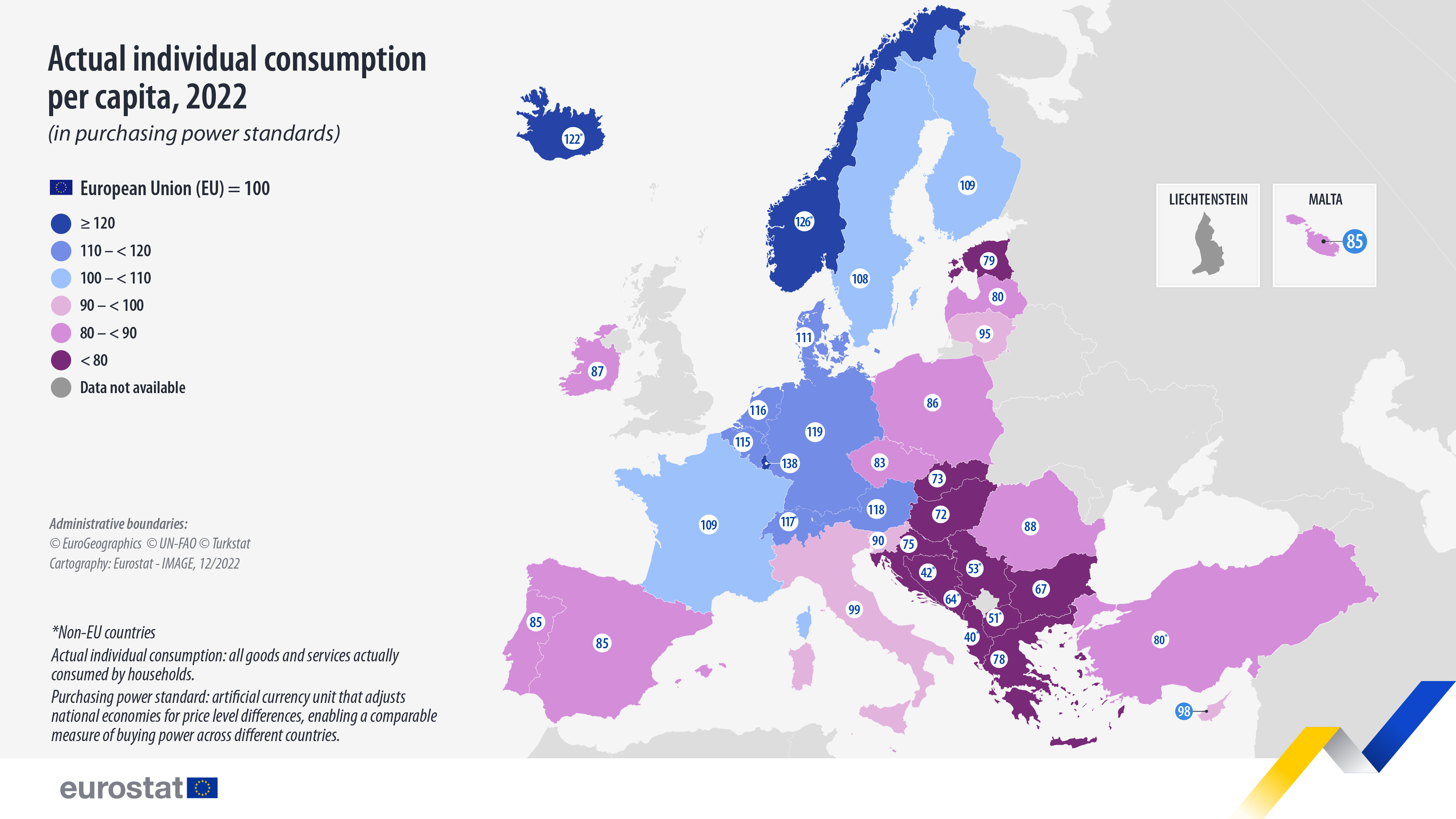Actual individual consumption per capita in 2022
Actual individual consumption (AIC) consists of goods and services actually consumed by households, irrespective of whether they were purchased and paid for by households directly, or by government, or by nonprofit organizations. The AIC per capita can be considered as an indicator of the material welfare of households. In 2022, AIC per capita expressed in purchasing power standards (PPS) varied from 67% to 138% of the EU average across the 27 EU countries.
This information comes from data on purchasing power parities published by Eurostat today. This article presents some of the findings from the more detailed account in the Statistics Explained article.
Source dataset: prc_ppp_ind
In 2022, nine EU countries recorded AIC per capita above the EU average. The highest levels were recorded in Luxembourg (38% above the EU average), Germany (19%) and Austria (18%).
Meanwhile, 18 EU countries recorded AIC per capita below the EU average, with the lowest levels recorded in Bulgaria (33% below the EU average), Hungary (28%) and Slovakia (27%).
GDP per capita ranged from 59% of EU average in Bulgaria to 261% in Luxembourg
Gross domestic product (GDP) per capita, a measure of economic activity, also showed substantial differences across the EU members.
Source dataset: prc_ppp_ind
GDP per capita above the EU average was recorded in 11 EU countries. It was highest in Luxembourg (161% above the EU average), Ireland (133%) and Denmark (37%). Meanwhile, it was lowest in Bulgaria (41% below the EU average), Slovakia and Greece (both 32%).
For more information
- Statistics Explained article on consumption and GDP per capita
- Thematic section on purchasing power parities
- Database on purchasing power parities
- Metadata on purchasing power parities
- Statistics 4 beginners on GDP
Methodological notes
- The provisional estimates for 2022 presented in this news article are based on GDP and population data for 2022, extracted on 5 June 2023, and the most recent PPPs available. Revised estimates will be published in December 2023.
- Luxembourg: The high GDP per capita in Luxembourg is partly due to the country's large share of cross-border workers in total employment. While contributing to GDP, these workers are not taken into consideration as part of the resident population which is used to calculate GDP per capita.
- Ireland: The high level of GDP per capita in Ireland can be partly explained by the presence of large multinational companies holding intellectual property. The associated contract manufacturing with these assets contributes to GDP, while a large part of the income earned from this production is returned to the companies’ ultimate owners abroad.
If you have any queries, please visit our contact us page.


